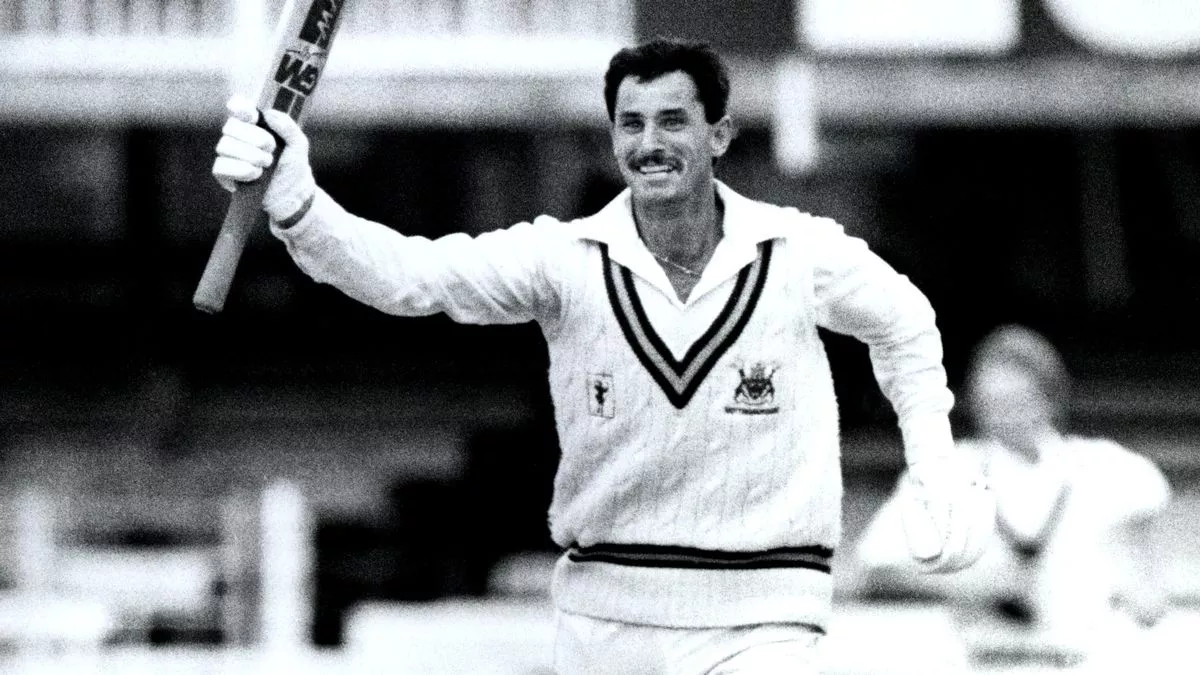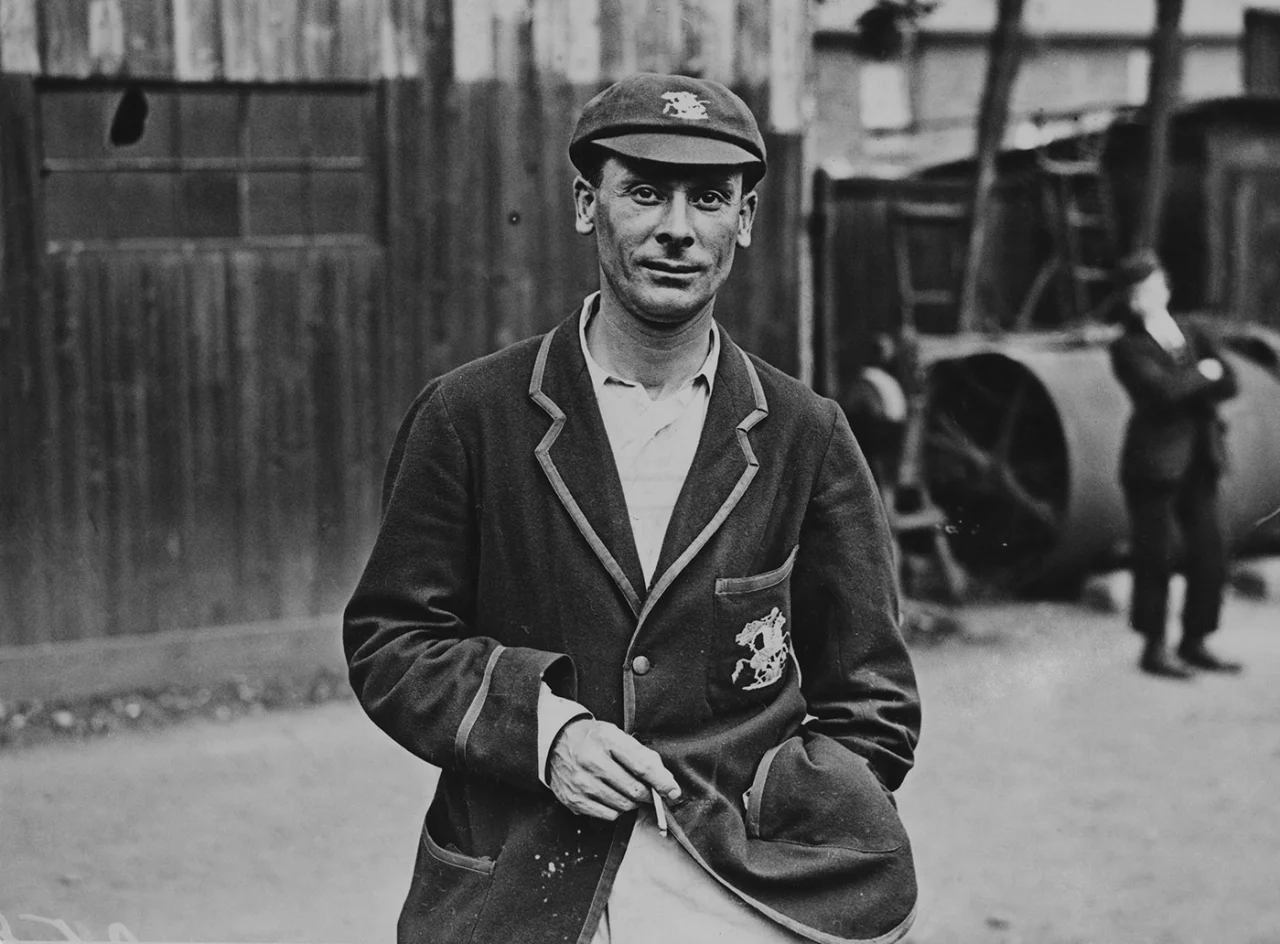Ian Botham – Ian Terence Botham, Baron Botham, OBE, born on November 24, 1955, in Heswall, England, stands as a towering figure in cricket history, celebrated for his all-round prowess.
Known for his aggressive right-handed batting and right-arm fast-medium bowling, Botham’s cricket career is marked by his exceptional ability to influence games with both bat and ball.
His Test career, representing England from 1976 to 1992, boasts 102 matches with 5,200 runs, including 14 centuries, and a top score of 208.
His bowling stats are equally impressive, with 383 wickets at an average of 28.40, including 27 instances of taking five wickets in an innings.
Botham’s first-class cricket was primarily with Somerset, though he also played for Worcestershire, Durham, and Queensland.
His record of achieving the ‘match double’ of scoring 100 runs and taking 10 wickets in the same Test match underscores his unique talent.
Botham’s contributions extend beyond the field, with significant charity work, particularly in raising funds for leukemia research. His induction into the ICC Cricket Hall of Fame in 2009 cements his legacy as one of cricket’s greatest all-rounders.
- Ian Botham is recognized as one of cricket's greatest all-rounders, with a career spanning from 1976 to 1992, featuring significant contributions as both a batsman and a bowler for England.
- He played a pivotal role in the 1981 Ashes series, known as "Botham's Ashes," where his performances dramatically turned the series in England's favor, highlighting his ability to influence matches.
- Botham's cricketing legacy includes scoring 5,200 runs and taking 383 wickets in Test cricket, showcasing his exceptional talent and versatility on the field.
- Beyond his sporting achievements, Botham has been actively involved in charity work, particularly focusing on leukemia research, raising millions through long-distance charity walks.
- His contributions to cricket and charity work were recognized with his induction into the ICC Cricket Hall of Fame in 2009, solidifying his status as a cricketing legend and a philanthropist.
- Botham's aggressive batting style and effective swing bowling, combined with his competitive spirit and mental strength, have left a lasting impact on cricket, inspiring future generations.
Ian Botham Early Life and Career Beginnings
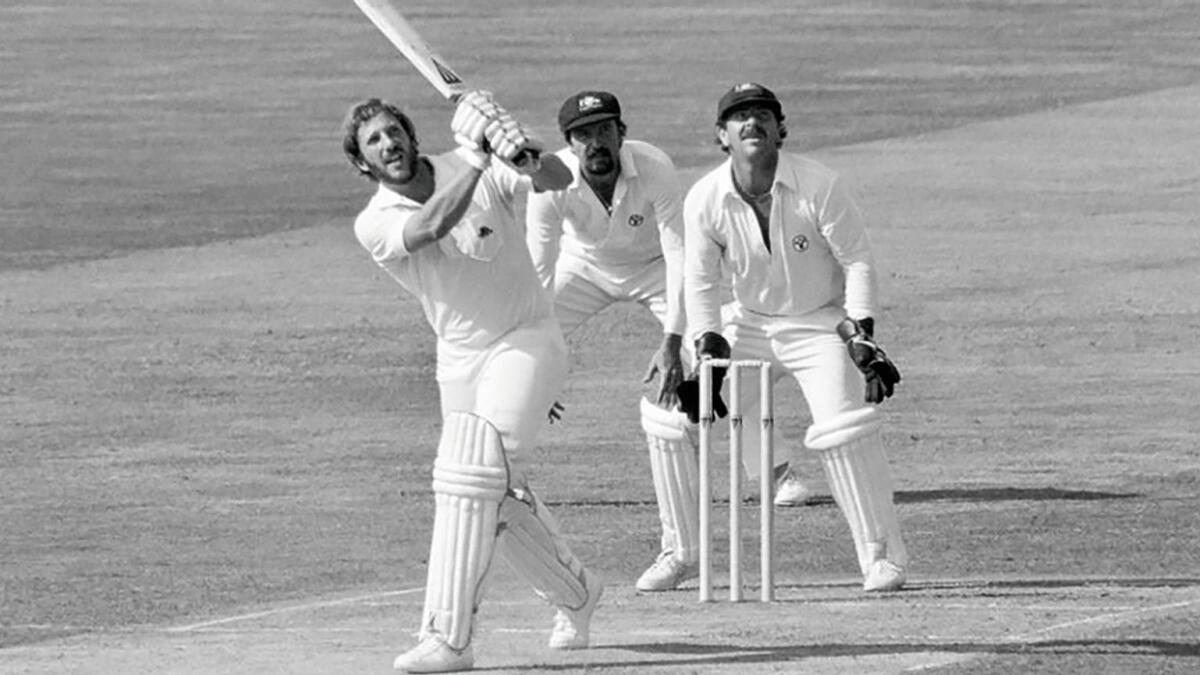
His early exposure to cricket at Yeovil Boys’ Grammar School fueled his passion, leading him to practice bowling techniques even before starting school.
Botham’s sporting talents were not confined to cricket; he excelled in football as well, playing for his school teams.
His cricketing skills were honed further at Bucklers Mead Comprehensive School, where he captained the under-16 cricket team at just thirteen.
His performances caught the attention of Somerset County Cricket Club’s youth coach, Bill Andrews, marking the beginning of his cricket career.
Despite an offer to pursue football with Crystal Palace, Ian Botham chose cricket, a decision that set him on the path to becoming one of the game’s greatest all-rounders.
His dedication to cricket was evident when he joined the ground staff at Lord’s at sixteen, immersing himself in the game and laying the foundation for his illustrious career.
Rise to Prominence
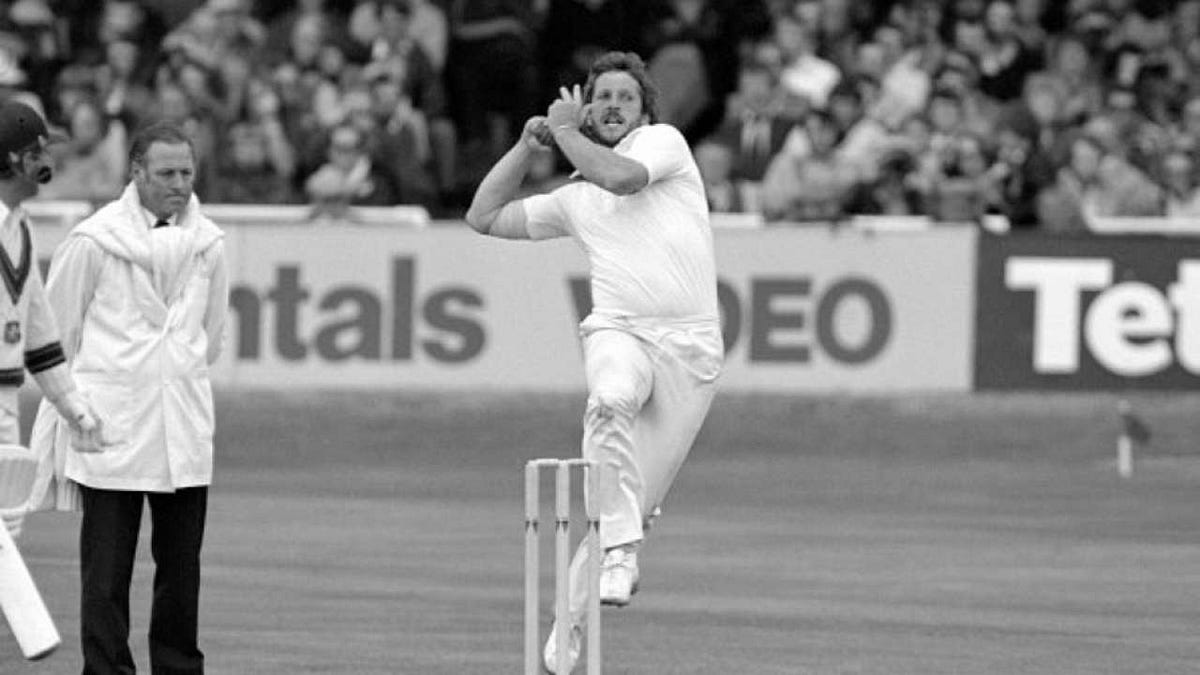
Ian Botham’s ascent to cricketing stardom began with his debut for England in 1977, quickly establishing himself as a formidable all-rounder.
His remarkable performance against Australia in the 1981 Ashes series, where he single-handedly turned the series around for England, catapulted him into the limelight.
Botham’s aggressive batting and potent bowling, characterized by a memorable 149 not out at Headingley and a series of match-winning wickets, showcased his unique ability to dominate the game in both disciplines.
This series, often referred to as “Botham’s Ashes,” marked his rise to prominence, solidifying his status as one of cricket’s greatest all-rounders.
Beyond the field, Botham’s charismatic personality and his off-field endeavors, including significant charity work, further endeared him to the public and cricket fans worldwide.
His contributions to cricket were recognized with his induction into the ICC Cricket Hall of Fame in 2009, a testament to his impact on the sport and his legacy as a cricketing legend.
“Botham’s Ashes” and Career Highlights
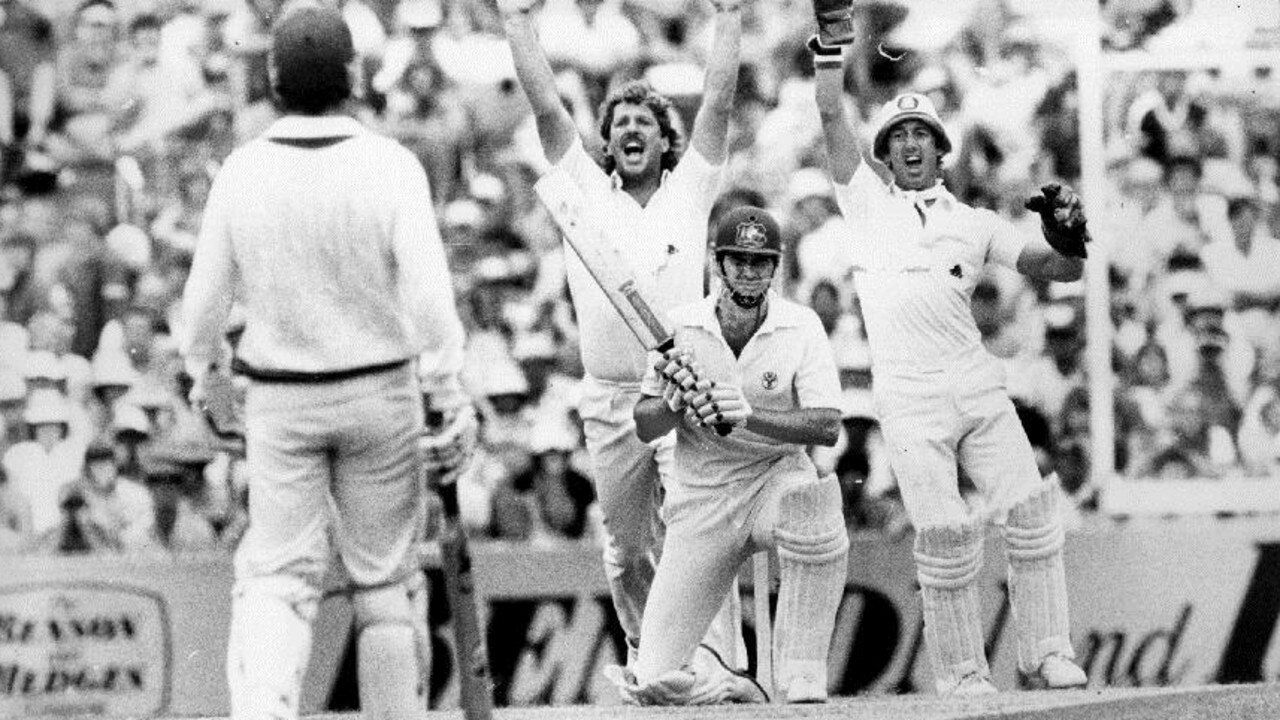
Ian Botham’s rise to prominence in the cricket world is epitomized by the legendary 1981 Ashes series, famously dubbed “Botham’s Ashes,” a testament to his pivotal role in England’s remarkable comeback victory against Australia.
Ian Botham, facing a slump in form and even relinquishing the captaincy earlier in the series, transformed despair into triumph at Headingley.
With England following on and odds stacked against them, Botham’s unbeaten 149 in the third Test ignited a miraculous turnaround.
His heroics didn’t stop there; he continued to dominate the series with ball and bat, including a pivotal 5-wicket haul at Edgbaston and a quickfire 118 at Old Trafford, sealing his status as a national hero.
Botham’s career, spanning from 1976 to 1992, was marked by numerous highlights, including being the first player to achieve the double of 5,000 runs and 300 wickets in Tests.
His induction into the ICC Cricket Hall of Fame in 2009 further cements his legacy as one of cricket’s greatest all-rounders, whose performances on the field were matched by his significant contributions off it, particularly in charity work.
- Ian Botham, a cricket legend, is best known for his central role in the 1981 Ashes series, famously known as “Botham’s Ashes.”
- Facing a career low and having stepped down as captain, Botham’s incredible 149 not out at Headingley sparked a miraculous turnaround for England.
- His heroics continued throughout the series, with Botham taking crucial wickets and scoring vital runs, including a 5-wicket haul at Edgbaston and a rapid 118 at Old Trafford.
- Botham’s cricket career, from 1976 to 1992, was filled with remarkable achievements, including being the first to reach the double of 5,000 runs and 300 wickets in Tests.
- Inducted into the ICC Cricket Hall of Fame in 2009, Botham’s legacy extends beyond his on-field exploits, notably in his significant charity work, further solidifying his status as one of cricket’s greatest all-rounders.
Bowling and Batting Style
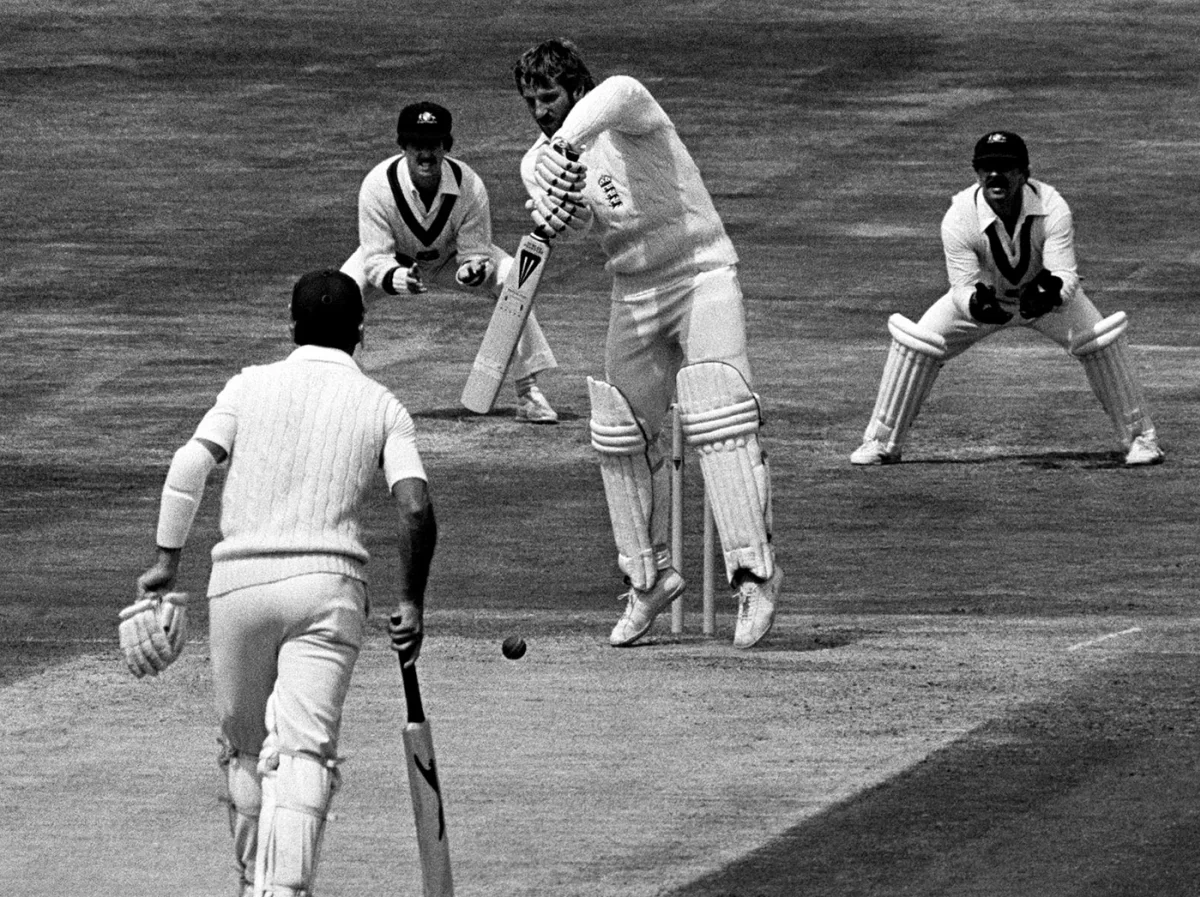
Ian Botham, an iconic figure in cricket, was renowned for his aggressive right-handed batting and right-arm fast-medium bowling style, making him one of the most celebrated all-rounders in cricket history.
His batting was characterized by a fearless approach, often taking the attack to the bowlers with a wide range of shots, including powerful drives and hooks.
Botham’s ability to change the course of a game with his batting made him a pivotal player for England.
As a bowler, he was noted for his swing bowling, utilizing both conventional and reverse swing to outfox batsmen.
Botham’s knack for taking crucial wickets often came from his sharp intellect on the field, understanding the conditions and the batsmen’s weaknesses.
His fielding, predominantly in the slips, was another testament to his all-round capabilities, often pulling off spectacular catches.
Botham’s style of play was not just about his skills but also his immense mental strength and competitive spirit, which left an indelible mark on the game.
Off-field Endeavours and Legacy

Ian Botham’s legacy extends far beyond the cricket field, marked by his significant contributions to charity and his role as a public figure.
Known for his charismatic personality and spirited approach to life, Ian Botham has been a tireless fundraiser, particularly in the fight against leukemia.
His series of long-distance charity walks, which began in 1985, have raised millions for research and treatment of the disease, showcasing his commitment to making a difference off the pitch.
Beyond his charitable endeavors, Ian Botham has also ventured into broadcasting, offering insightful commentary and analysis, further cementing his status as a cricketing icon.
His induction into the ICC Cricket Hall of Fame not only recognizes his on-field achievements but also honors a life dedicated to uplifting others.
Botham’s off-field legacy is a testament to his character, demonstrating that his impact on the world is as profound as his contributions to cricket – Ian Botham.
Frequently Asked Questions (FAQs)
What were Ian Botham's key contributions to cricket?
Ian Botham is celebrated for his all-round prowess in cricket, marked by aggressive right-handed batting and right-arm fast-medium bowling.
His Test career for England from 1976 to 1992 included 102 matches, 5,200 runs with 14 centuries, and 383 wickets.
Notably, his performance in the 1981 Ashes series, known as “Botham’s Ashes,” highlighted his ability to influence games significantly, making him one of cricket’s greatest all-rounders.
How did Ian Botham impact cricket beyond his playing career?
Beyond his remarkable playing career, Ian Botham has made significant contributions through charity work, especially in raising funds for leukemia research.
His long-distance charity walks have raised millions for the cause.
Additionally, Botham has been a prominent cricket broadcaster, providing insightful analysis and commentary.
His induction into the ICC Cricket Hall of Fame in 2009 acknowledges both his on-field achievements and off-field contributions.
What makes Ian Botham's batting and bowling style unique?
Ian Botham’s batting style was characterized by aggression and a wide range of powerful shots, making him a pivotal player for England.
As a bowler, he was known for his swing bowling, utilizing both conventional and reverse swing effectively.
Botham’s ability to take crucial wickets and his sharp fielding, predominantly in the slips, underscored his all-round capabilities and competitive spirit, leaving a lasting impact on the game.




